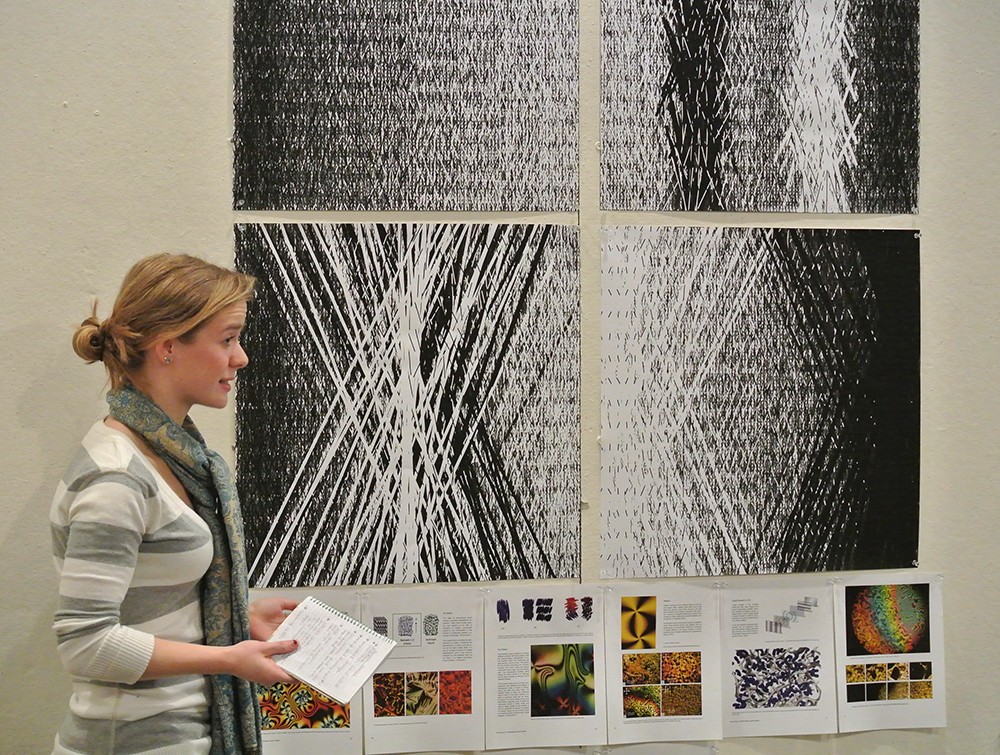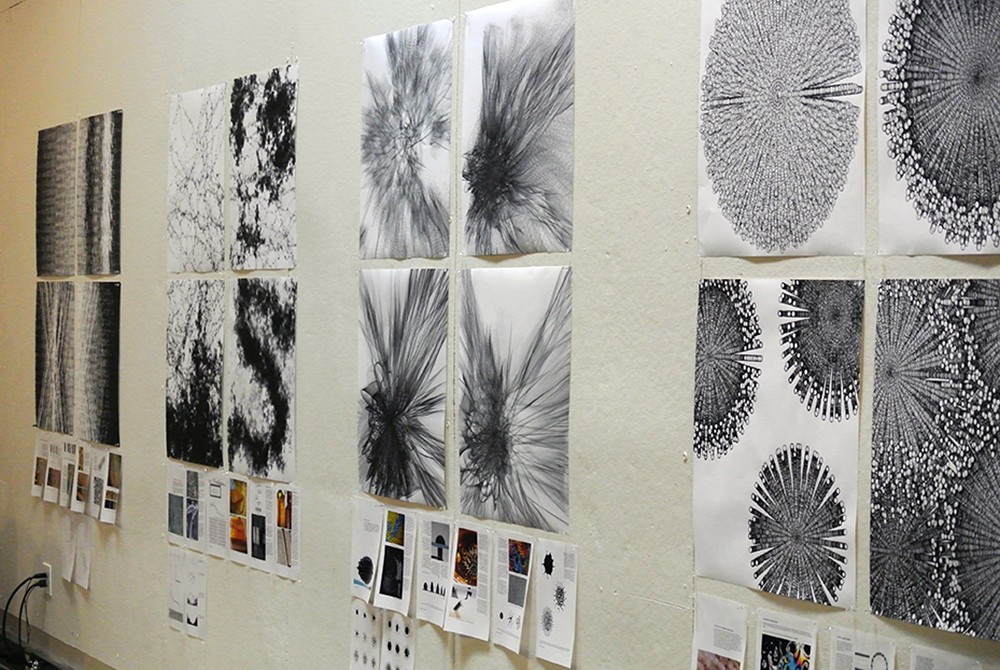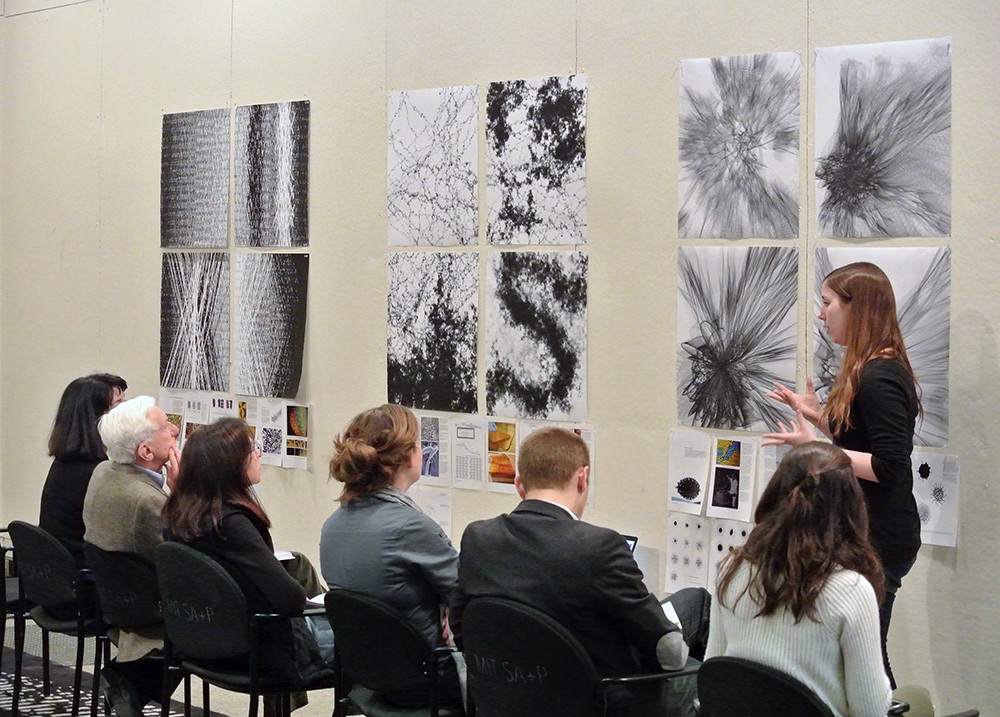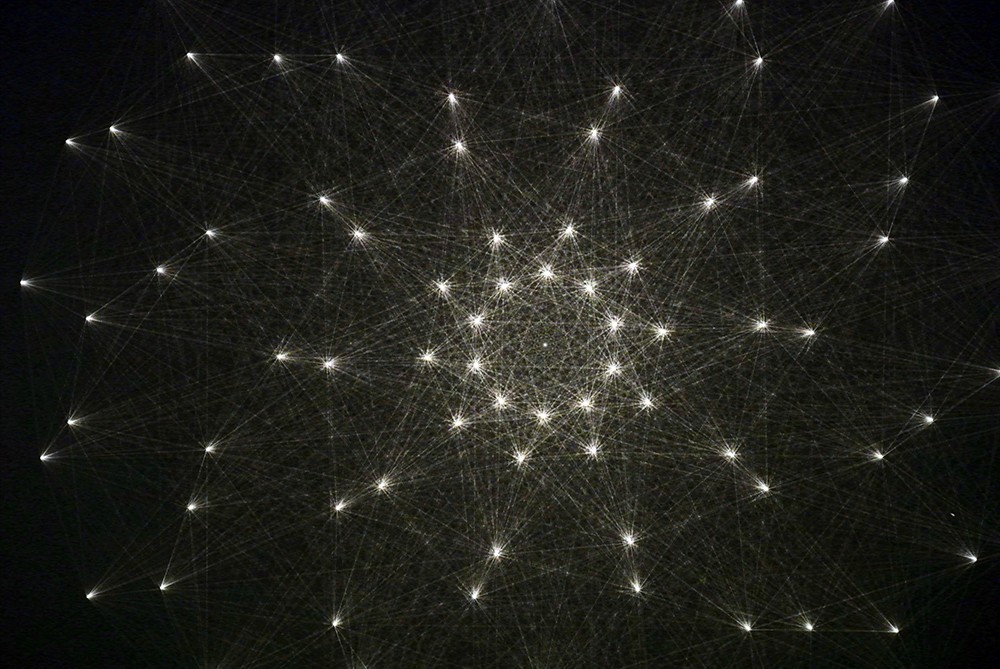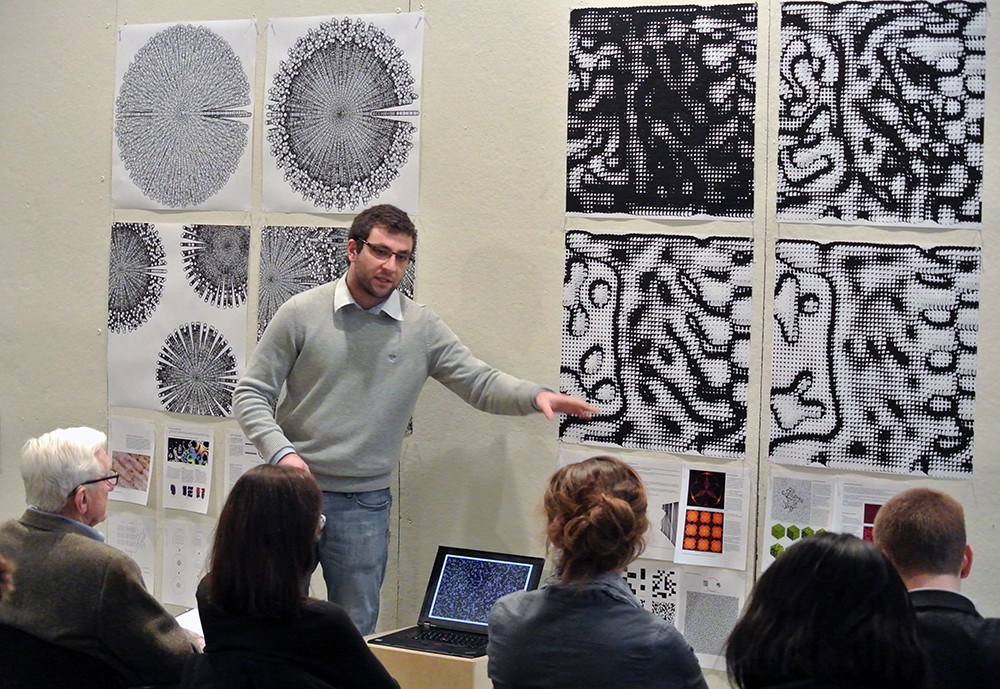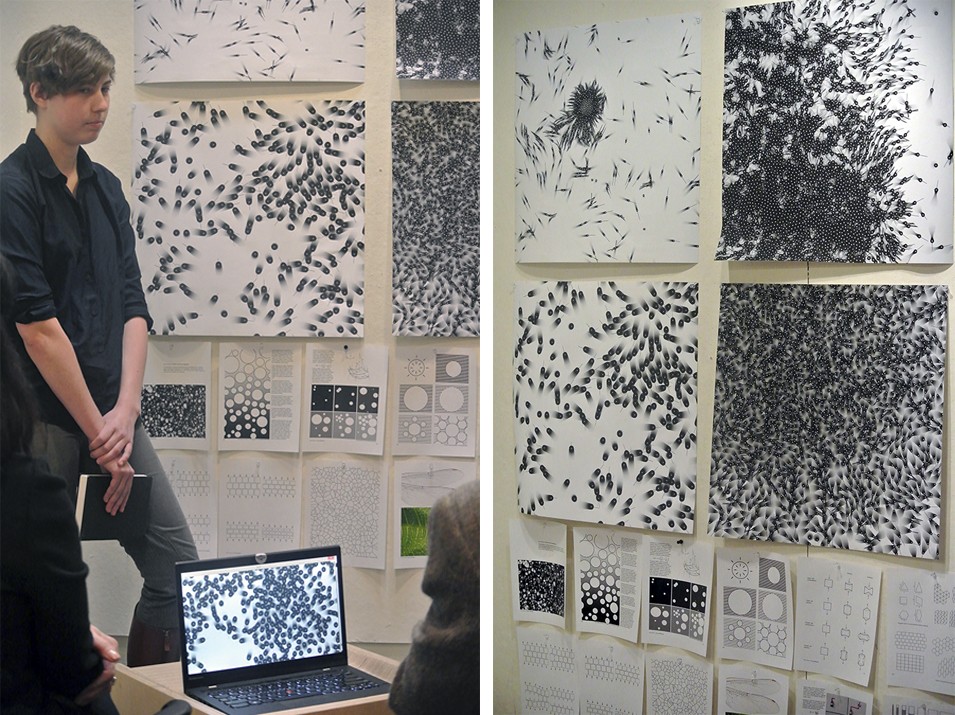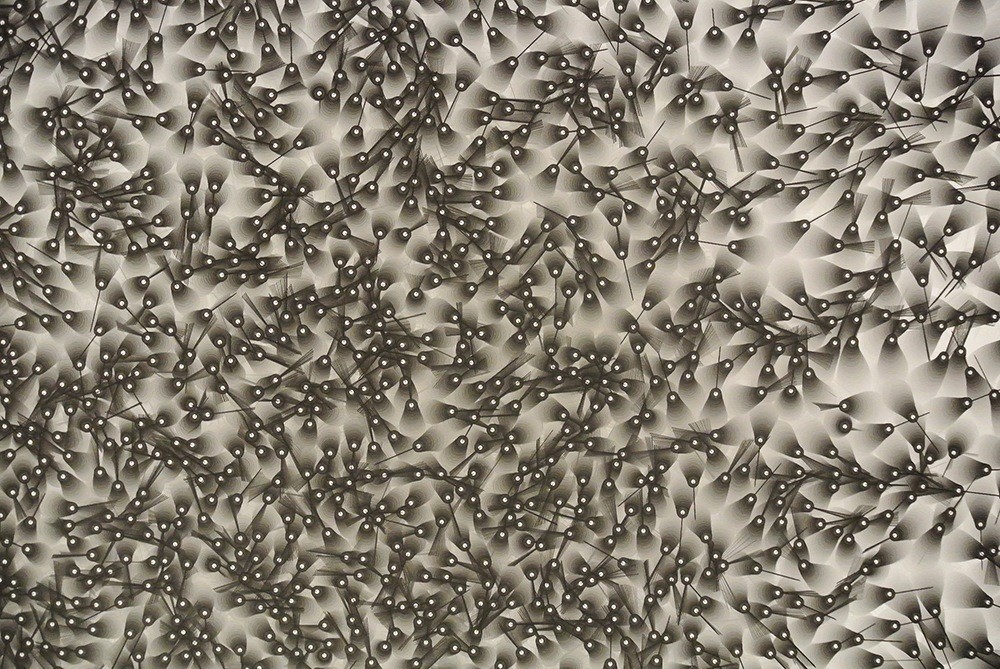With his canvas stretched on the floor, Jackson Pollock dipped brushes or sticks into paint cans; then he drew in the air, dripping paint on the canvas, hovering, leaning, lunging, and gesturing here and there with varying speed. His pace, pauses and choreography combined with gravity, resulting in his famous drip paintings.
MIT Research Scientist Skylar Tibbits cites Pollock’s process of “curating forces” as an inspiration behind the first assignment for his class 4.022 Architectural Design Fundamentals I. He wanted the students to embrace the idea that the medium has a life of its own. Only instead of paint subjected to gravity, his students’ medium was code. They were to create an algorithm that would display natural forces, and then produce four progressions of a drawing based on their research of material properties. As Tibbits stressed, the artistry is in the curation, and he told students to ponder the question, “At what point is it your authorship and at what point is it the force of the generative systems?”
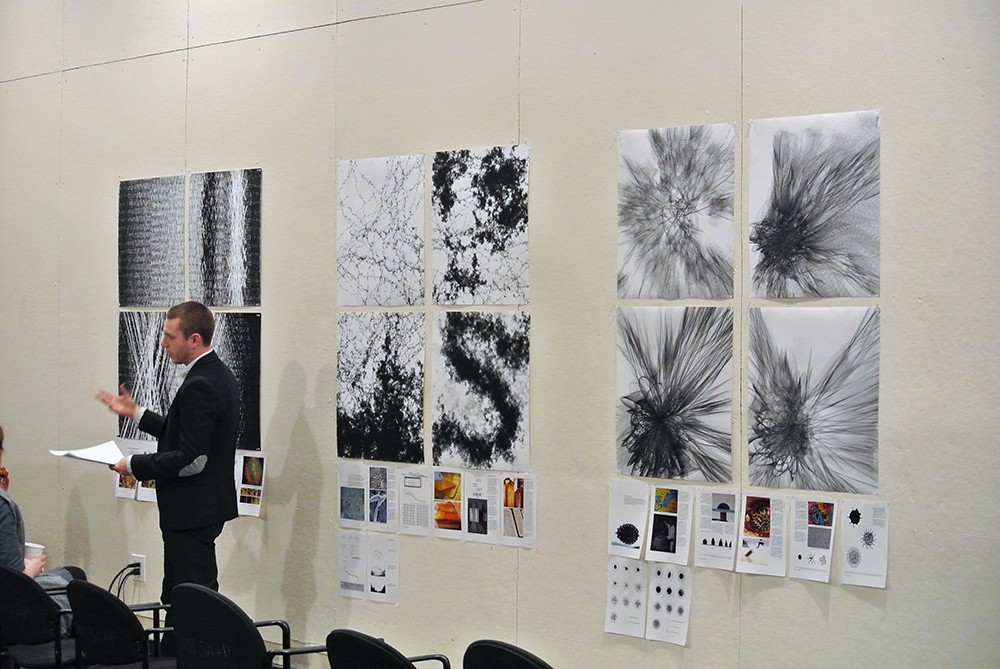
This studio class, which is co-sponsored by the MIT Center for Art, Science & Technology (CAST) and the Department of Architecture, aims to develop students’ understanding of architecture by studying the intersection of art, design and materials science. Through three primary exercises, “Generative drawings,” “New material formations” and “Living objects/growing structures,” students develop their techniques of drawing, making and organizing structures. This course is specifically created to play off students’ non-architectural education by introducing a domain of investigation whereby students can learn to design through the lens of cross-disciplinary experimentation.
Throughout the semester students investigate generative art, design and materials science, looking at “pattern formation” in an attempt to extract principles, learn techniques and develop strategies for design. By studying the formation of materials, students explore both the fundamental science as well as new advances in research to understand the building blocks of matter, organizational patterns, processes of material creation and micro-to-macro material behavior.
To grasp comparisons, students also research both contemporary and historic works of generative art and design to understand the rules, logic and components of the work and how high-level patterns emerge from local interaction.
For the first project, “Generative drawings,” the students — many of whom have no prior design experience — investigated processes of drawing by studying precedents from the fields of generative art and materials science. After exploring the development of the field, works by prominent figures and their underlying creative principles, students produced a series of “logic diagrams” to further understand the work of their predecessors. For this part of the assignment, they were challenged to pose questions such as, What is the starting condition? How is it generated/grown? What are the underlying rules? What are the fundamental building blocks/elements? When is the work finished? And how it can be translated into an abstract series of principles?
Next, students developed a series of their own generative digital drawings utilizing the underlying logics, characteristics and behaviors of their chosen precedent. As described on the course syllabus, “Their drawings can be thought of as digital agents, interacting, assembling, avoiding and reacting to one another to self-create a complete drawing. Students may study principles such as the movement and behavior of their precedent, the process of growth, the relationship between various elements, the interaction, aggregation and adaptation of their systems to help develop their generative drawings.”
Students investigated a range of material structures and natural phenomena, including hydrogels, capillary action, carbon nanotubes, snowflakes, lattice bonds of steel, microfibers, liquid crystal, chaos theory, eInk, wood grain and graphene, to create widely varied generative drawings. The next project will require the students to translate some of the things they discovered in these drawings into 2 ½ or 3 dimensional materials.
A two-day symposium will be held in conjunction with the class and bring together leading experts from art, design, materials science, engineering and industry. This “Active Matter Summit” aims to showcase and help define the emerging field of programmable materials by building a strong community that can collectively explore the challenges, applications and future scenarios of the field. Students will showcase work from their second project through a small exhibition during the symposium to help inspire and gain feedback from the major practitioners in this emerging field.
This studio has been funded by the MIT Center for Art, Science & Technology (CAST) through the generosity of Ronald A. Kurtz ’54, in recognition of the exemplary career of Merton C. Flemings, Toyota Professor Emeritus and founding director of the Materials Processing Center at MIT

